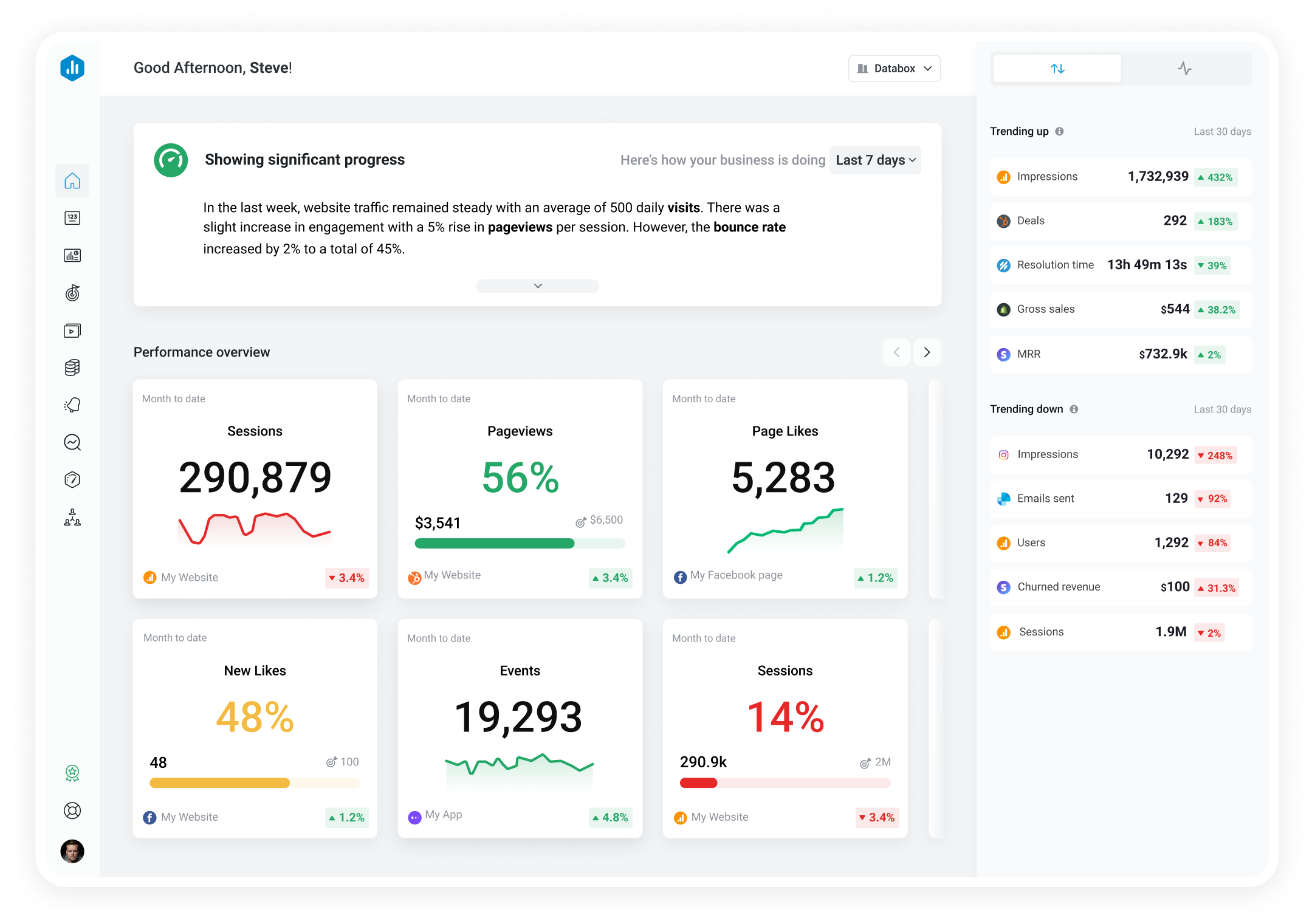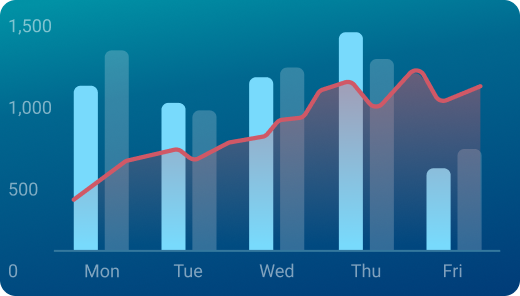Track all of your key business metrics from one screen
GET STARTED
 Eventbrite
Net Sales by Sales Channel
Eventbrite
Net Sales by Sales Channel The Net Sales by Sales Channel metric measures the total amount of revenue generated from each sales channel after accounting for refunds, discounts, and cancellations.
With Databox you can track all your metrics from various data sources in one place.

Used to show comparisons between values.
Databox is a business analytics software that allows you to track and visualize your most important metrics from any data source in one centralized platform.
To track Net Sales by Sales Channel using Databox, follow these steps:
 Goals
Goals Scorecards
Scorecards Metric Digest
Metric Digest Metric Builder
Metric Builder Data Calculations
Data Calculations Performance Screen
Performance Screen